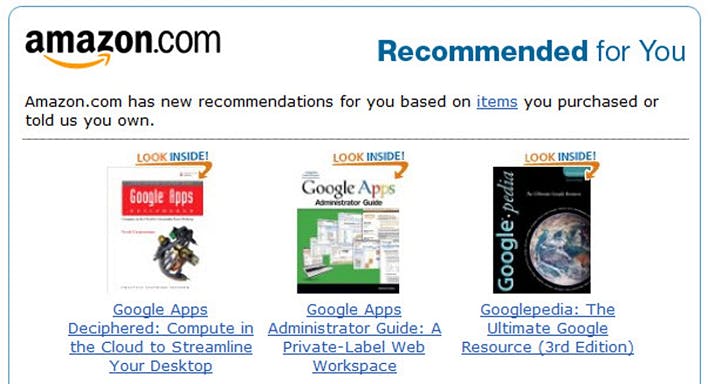What is market segmentation? Strategies and examples
Jan 20th, 2022

Contents
What is market segmentation?
Market segmentation strategies with examples
How to conduct market segmentation?
Market segmentation is essential to understanding customers’ concerns and needs and determining how you can address these demands with your product or service. It allows you to create and implement more effective marketing strategies, develop powerful messaging and select the best tactics for reaching desired target audience. With market segmentation, you will be able to discover your audience’s specific characteristics, such as age, location, hobbies, and purchasing habits, and launch more focused digital advertising campaigns.
Instead of delivering a generic message to your whole audience, market segmentation enables you to create personalized content targeted at the appropriate audience at the right time. As a result, you can differentiate your brand from the competition by developing a more specific value proposition, strengthening brand identity, and delivering solutions that better resonate with the customers. Furthermore, market segmentation may serve to identify niche market opportunities and develop products for underserved niches.
What is market segmentation?
Market segmentation is a process of breaking down a large consumer or business market into smaller customer groups or segments based on prevalent features. When segmenting markets, analysts consider common characteristics, including similar lifestyles, shared needs, interests, or demographic traits. Market segmentation aims to identify the most profitable segments or groups with growth potential and focus marketing efforts on addressing the relevant audiences and achieving business objectives.
Besides identifying the most profitable customer groups, market segmentation focuses on developing profiles of major segments to analyze their requirements and understand how customers make purchasing decisions. Each market segment requires a unique marketing approach, such as specific offers, advertising, price, and other components.
When developing marketing communications plans, marketers use the STP model that includes segmentation, targeting, and positioning. The model assumes that you need to determine critical qualities and assess the commercial appeal of each market segment, then create positioning for each category and finally develop a marketing mix taking into account the available information about each target group.
There are four basic approaches to market segmentation: undifferentiated strategy, focus strategy, differentiated strategy, and hypersegmentation. The undifferentiated strategy targets the entire market instead of its separate part. To reach the maximum number of consumers, the approach requires a single marketing mix, including one product, one price, one placement, and a set of mass-market advertising activities targeting the market as a whole. Nowadays, it is difficult to find examples of undifferentiated strategies. However, William M. Pride and O. C. Ferrel mention sugar and salt as examples of the products that might be successfully marketed by using this approach as many consumers have the matching needs for these goods.
The well-known brands, such as McDonald’s, Coca-Cola, and Colgate, use undifferentiated strategies to develop products and marketing programs that appeal to the greatest number of potential customers. For instance, McDonald’s uses “I’m loving it” as a slogan globally. Coca-Cola sells its iconic beverage using the same bottle design, same advertisements for multiple countries, and comparable distribution channels throughout its history with some exceptions. Colgate sells toothpaste which is a product that does not require segmenting customers as it targets all individuals, despite age, gender, or social status.

Focus strategy implies concentrating marketing efforts on one narrow, well-defined target market. Marketers pay attention to the specific market segment and use a single marketing mix. Focus strategy allows a company to target a small market segment and compete against large corporations. For example, the company markets a product for teenagers, or a retail business targets the residents of a specific region. On the other hand, when the company focuses on a single market and product, it becomes exposed to unexpected changes in market conditions.
Differentiated strategy or multisegment marketing targets several niches and concentrates on two or more specific segments. The approach involves the application of different marketing mixes to each particular market segment. The marketing mix consists of the product, price, positioning, and advertising campaign tailored for each narrow market. An example of a differentiated strategy is a ski resort that targets two market segments: young people and families with children. The company would launch two separate promotional campaigns directed at these audiences: one showing students snowboarding and the other - showing families skiing to appeal to both segments. This approach would also require them to provide separate services appealing to families (such as skiing instructors for children) and young people (such as more advanced ski trails or busy nightlife in the area).
Hypersegmentation or one-to-one marketing is a practice that allows for personalizing the offer for each particular customer. In contrast to differentiated strategy, hypersegmentation is more than defining a group of people with similar characteristics. Instead, its objective is to focus on potential customers ready to buy the product at once. To create unique and targeted experiences, companies use data analytics, automation, and artificial intelligence. According to the approach, companies can deliver highly-personalized relevant messages to specific customers through the proper channels at the right time. For example, we all know how Amazon provides uniquely customized suggestions based on our previous purchases. You can find more information on building a differentiation strategy in our dedicated article. Meanwhile, let us move on to discuss different types of market segmentation strategies.
Market segmentation strategies with examples
Market segmentation strategies help divide customers according to demographic, geographic, behavioral, generational, cultural, and other characteristics. By using these strategies, you will identify people who are more likely to purchase your products and services during certain periods.
Demographic market segmentation
Demographic segmentation is the first thing that comes to mind when people hear about market segmentation. This is one of the most successful ways to target specific customers as you can easily collect demographic data using Facebook Audience Insights and Google Analytics. Demographic market segmentation investigates the following characteristics: age, gender, location, ethnicity, education, income, occupation and role in a company, marital status, religion, and so on.
To implement this market segmentation strategy, you can focus on three non-character traits: age, gender, and income. The income level is one of the central segmentation factors for luxury brands, such as Dior and Gucci. These companies often advertise their products in magazines like Vogue and Marie Claire to attract people who can afford luxury designer clothes. In contrast, B2B companies like IBM and Hubspot are more interested in customers’ occupations. They need to make sure that they market products to people who hold high-level positions in a specific industry or function. Video game design companies like Wargaming target their products primarily on young people aged 18-30 as they can already be successful paying customers while still having a lot of free time and little to no family commitments.
Geographic market segmentation
Geographic market segmentation refers to grouping customers according to their physical location. You can segment people taking into consideration state, country, region, city, zip code, a radius around a location, climate and season, rural or urban geographic area. Geographic segmentation either relies on a particular geographic boundary such as country or city or a type of territory like a climatic zone.
The strategy differs from other methods as it only requires customers’ location. The size of the chosen area predominantly depends on the company’s business objectives and size. Big corporations typically target wider territories. Seasonal products like coats and winter clothing, as well as swimwear, are usually targeted at defined geographic segments.
True Temper, a manufacturer of snow removal tools, markets its snow shovels in countries with cold climatic conditions where snowfalls are common. Promoting such products in locations with a mild and warm climate is pointless.
Geo-demographic segmentation
Geo-demographic segmentation is a market segmentation strategy based on collecting
demographic characteristics within a given geographic area. Geo-demography relies upon the combination of data from demographics, geography, and sociology gathered in a particular location. This data typically includes age, gender, climatic conditions, financial status, languages, traditions, food, and clothing habits. Marketers can use this strategy to forecast sales volume and demand, target relevant audiences, develop compelling messaging, and create products for different markets.
Geo-demographic segmentation in marketing usually considers two main assumptions about consumers’ behavior. People who live in the same region and conditions will have similar needs and requirements compared with people who live far apart. Another principle states that people from the same area will have similar personality traits even when separated by a considerable distance. Even when consumers from India live in Europe for a long time, they will be the target audience for a brand selling spicy curry.
This strategy is beneficial for highly targeted and precise marketing. There are several systems for geo-demographic analysis, including CACI’s Acorn, PersonicX, and ESRI Tapestry. Potential Rating Index for Zipmarkets or PRIZM integrates data from population census, media, purchase behavior, and other characteristics to generate specific customer segments.
With PRIZM, the Michigan tourism bureau identified and targeted various customer categories. The most substantial Michigan segment interested in tourism is the residents of Chicago living within particular zip codes, constituting primarily upper-middle-class families with children. Another group identified by the organization included individuals from Cleveland who travel without children. To appeal to each category, the Michigan tourism bureau developed entirely different marketing campaigns for each segment.
Psychographic market segmentation
Psychographic segmentation focuses on customers’ personalities, interests, and hobbies. This strategy is most appropriate for niche markets where the price is less important than brand awareness, quality, and uniqueness. Psychographic segmentation divides a market into groups taking into account customers’ personality traits, life goals, values, beliefs, opinions, and lifestyles.
Compared to previously mentioned market segmentation strategies, psychographic segmentation is more difficult to implement. But, at the same time, a thorough understanding of your audience’s psychological features will allow you to provide them more personalized approach.
You can identify your audience’s psychographics by using large-scale surveys aimed to discover customers’ activities, attitudes, and interests, commonly known together as AIO inventories. Namely, VALS, or Values and Lifestyles, one of the most widely used psychographic survey techniques, classifies customer categories based on eight clusters: innovators, thinkers, believers, achievers, strivers, experiencers, makers, survivors.
Food delivery companies like UberEats often depict customers eating delicious food in the privacy of their home as a massive part of their target customers consists of introverted people. On the other hand, Forever 21 relies on the customer’s social status. Their marketing efforts are aimed at middle-class clients looking for fashionable clothes at a reasonable price. The brand does not represent itself as high-end or luxury; instead, Forever 21 emphasizes its ability to create trendy yet affordable products.

Behavioral market segmentation
Behavioral market segmentation rests on consumers’ behavior patterns, attitudes, and reactions to products or services. This strategy is a relatively new concept that has evolved due to advances in technology. Nowadays, specialists can segment the market by analyzing the data gathered through consumer data reports and surveys, weighing them up against marketing trends.
This strategy classifies customers according to their purchasing habits, interaction with the brand, buyer journey stage, brand loyalty traits, product or service usage frequency, price sensitivity, and previous product feedback. The other crucial factors are benefits sought and marketing tactic sensitivity. Benefits sought is the assessment of the various gains buyers pursue when comparing identical products or services. Marketing tactic sensitivity is the response to marketing techniques, such as promotions, coupons, customer service, etc.
Amazon’s algorithms analyze customers’ purchasing history and viewed items, and recommend the products based on their preferences and previous orders. For instance, if a customer buys a video game, he will be offered to purchase gaming accessories and memory cards.

Generational and life stage market segmentation
Generational and life stage market segmentation is very similar to demographic classification, but instead of age, it groups customers according to marital status, property ownership, or whether or not they have children. While generational marketing has been the most popular segmentation method for a long time, life stage market segmentation proves to be more effective. By segmenting a generation into different life stages, marketers can create a more relevant offer and craft a compelling message.
Millennials or people born in 1982-2004 can now be at the following life stages: attending college, moving out, getting married, or having children. The messages targeted at millennials in college and millennials starting a family will differ greatly. If you use the key milestones in your customers’ lives, you will be able to reach out to them with a targeted and customized offer. You can divide your audience into the following groups: newly independent or people graduating from universities, starting careers and getting married, new parents, and people in post-parenting and retirement life stages.
Millennials are changing the traditional marketing approaches as they are no more sensitive to the old ways the products and services used to be advertised. Instead, millennials make decisions based on Instagram photos and Youtube recommendations. So the companies like Yelp, TripAdvisor, and Rotten Tomatoes took advantage of this generation’s tendency to rely on other people’s opinions.

Cultural market segmentation
The purpose of cultural market segmentation is to understand customers’ behavior in the context of social traditions and attitudes accepted in the community to which they belong. The market segment identified with the help of cultural market segmentation typically shares the following characteristics: common language, location, religion, food preferences, music and art, lifestyles, education, and national traditions. The cultural background has an immense impact on the way the individual makes purchase decisions and influences the overall consumer behavior.
McDonald's is a perfect example of a brand that targets ads according to customers’ culture. In India, the company does not serve any beef or pork as a cow is considered sacred, and pork is forbidden for Muslims who make up a significant part of the population. McDonald's offers vegetarian burgers instead. Nike creates promotional campaigns with the focus on baseball and American football in the US, while in Europe the brand uses soccer in its advertisements.

Firmographic market segmentation
The above-listed strategies focus primarily on B2C organizations; however, a firmographic market segmentation approach was developed for B2B companies. Firmographic segmentation strategy analyzes and groups B2B customers on the basis of the following common characteristics: industry, location, company size, number of employees, status, performance, annual revenue, executive title, number of years in business, and sales cycle stage. The firmographic market segmentation is very similar to demographic segmentation used by B2C marketers. Take a look at our article on B2B vs B2C to explore other differences between them in marketing, sales, and customer service.
There are two classifications used to categorize businesses. These are the Standard Industry Classification (SIC) and North American Industry Classification System (NAICS). Marketing specialists may find SIC and NAICS codes, as well as business size and metropolitan areas, on the NAICS website.
Milestone Localization, the company providing professional translation services, uses a firmographic segmentation strategy to create highly targeted lists for cold email campaigns and LinkedIn promotional activities. Milestone Localization develops marketing campaigns taking into account the size of the company, its business objectives, competitors, number of employees, areas of operation, and revenue. The company collects firmographic data from Crunchbase, GetLatka, Traxcn, Seedtable, and SaaStock.
The implementation of market segmentation strategies has a wide range of benefits, including more effective and targeted marketing, better returns on investment, increased customer retention and loyalty. In addition, market segmentation allows you to focus on the customers’ needs and provide them with the best solution.
How to conduct market segmentation?
Once you have learned about common market segmentation strategies, it is time to put the theory into practice.
Perform an audience analysis
Conduct interviews with the leads, existing and past customers. Talk to your sales team to discover any trends they noticed when dealing with consumers. Analyze data from CRM and POS tools to understand how often customers visit your store, how much they spend, and what products and services they like the most. Use Google Analytics to research your audience’s geography. Audience Overlap and Competitor Keyword Matrix will help you determine which subjects and themes are most important to your target market.
Create a buyer persona
Use the data collected from the audience analysis to develop the buyer persona or the profile of the ideal customer you want to attract. The buyer persona will allow you to visualize the perfect customer and identify the most promising market segments.
Identify market segment opportunities
Market segment opportunities are tendencies that can generate new offerings or new marketing approaches. First, you need to identify the problems your brand solves better than competitors, your advantages and strong points, and the ideal customers you like to serve. Then using buyer persona and audience analysis, find the most common customer features, the vast customer segments that stand out the most, and underserved segments.
Research the potential market segment
Before launching a marketing campaign for a new market segment, perform research to understand whether it is a good choice. Conduct keyword analysis to make sure people look for words relevant to your market niche. Identify the brands already on the market and think about how you can differentiate yourself from the competition.
Test the idea
Launch a few campaigns and monitor the results to find the approaches that resonate with your audience. Test different strategies and make improvements based on your findings. Observe the target audience's behavior regularly. People do not necessarily have the same requirements, perceptions, and interests throughout the year. That is why a thorough examination of the target audience is crucial.
Market segmentation is essential for businesses as it allows companies to identify the customers interested in their products and create a message based on their needs. Therefore, using one of the market segmentation strategies leads to the more successful implementation of marketing activities and helps achieve business goals.
